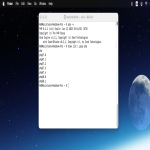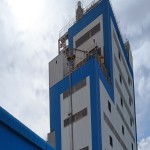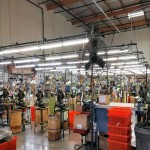Predictive Maintenance: A Game-Changer for Industrial Efficiency
In the landscape of modern manufacturing, downtime and unexpected equipment failures can pose significant challenges to productivity and profitability. However, the advent of predictive maintenance, fueled by advanced technologies such as the Industrial Internet of Things (IIoT) and machine learning, is reshaping how industries approach equipment upkeep and reliability.
Understanding Predictive Maintenance
Predictive maintenance involves the use of data analytics, sensors, and machine learning algorithms to predict when equipment is likely to fail. This proactive approach contrasts with traditional reactive maintenance, allowing businesses to address issues before they escalate, minimizing downtime, and extending the lifespan of machinery.
The Role of IIoT in Predictive Maintenance
At the core of predictive maintenance is the ability to gather real-time data from sensors embedded in machinery. The Industrial Internet of Things (IIoT) facilitates this by creating a network of interconnected devices that constantly monitor and communicate crucial information about the health and performance of industrial equipment.
Niotek's Contribution to Predictive Maintenance
Niotek, a leading player in Industry 4.0 solutions, has spearheaded the integration of predictive maintenance through its Magna IoT platform. The flagship product, HORUS, utilizes data analytics and machine learning to predict potential equipment failures. By continuously analyzing performance data, HORUS helps businesses transition from reactive to proactive maintenance strategies.
Benefits of Predictive Maintenance
- Reduced Downtime: Anticipating and addressing potential issues before they lead to failures significantly reduces unplanned downtime, keeping operations running smoothly.
- Extended Equipment Lifespan: By addressing issues in their early stages, predictive maintenance helps prolong the lifespan of critical machinery, optimizing the return on investment.
- Cost Savings: Proactively addressing maintenance needs reduces the costs associated with emergency repairs and minimizes the impact of unexpected breakdowns on production schedules.
- Improved Safety: Regular monitoring of equipment performance enhances safety by identifying and rectifying potential hazards before they escalate.
Implementation Challenges and Solutions
While predictive maintenance holds immense potential, businesses may face challenges during implementation, such as data integration and system compatibility. Niotek's Magna IoT platform addresses these concerns by offering a flexible and scalable solution that seamlessly integrates with existing industrial systems.
Conclusion
As manufacturing continues to evolve, predictive maintenance emerges as a crucial component in the pursuit of operational excellence. Niotek's commitment to integrating this technology into its solutions reflects a broader industry shift toward proactive, data-driven approaches to equipment maintenance. In embracing predictive maintenance, businesses stand to gain not only in terms of efficiency and cost savings but also in fortifying their position at the forefront of the Fourth Industrial Revolution.













